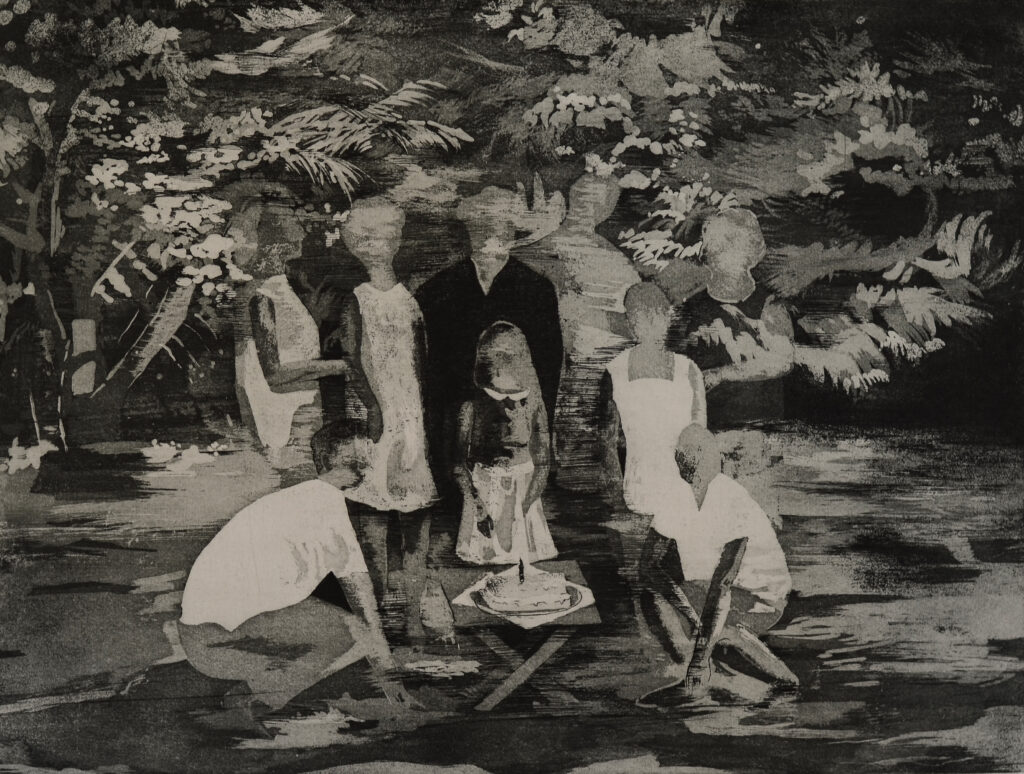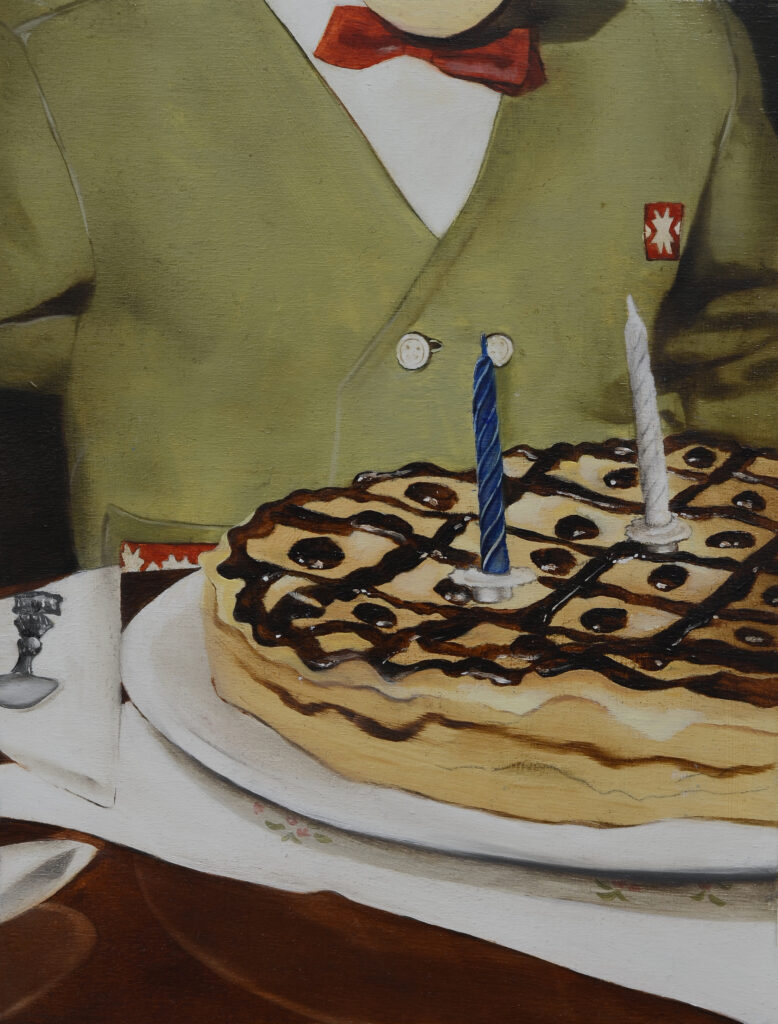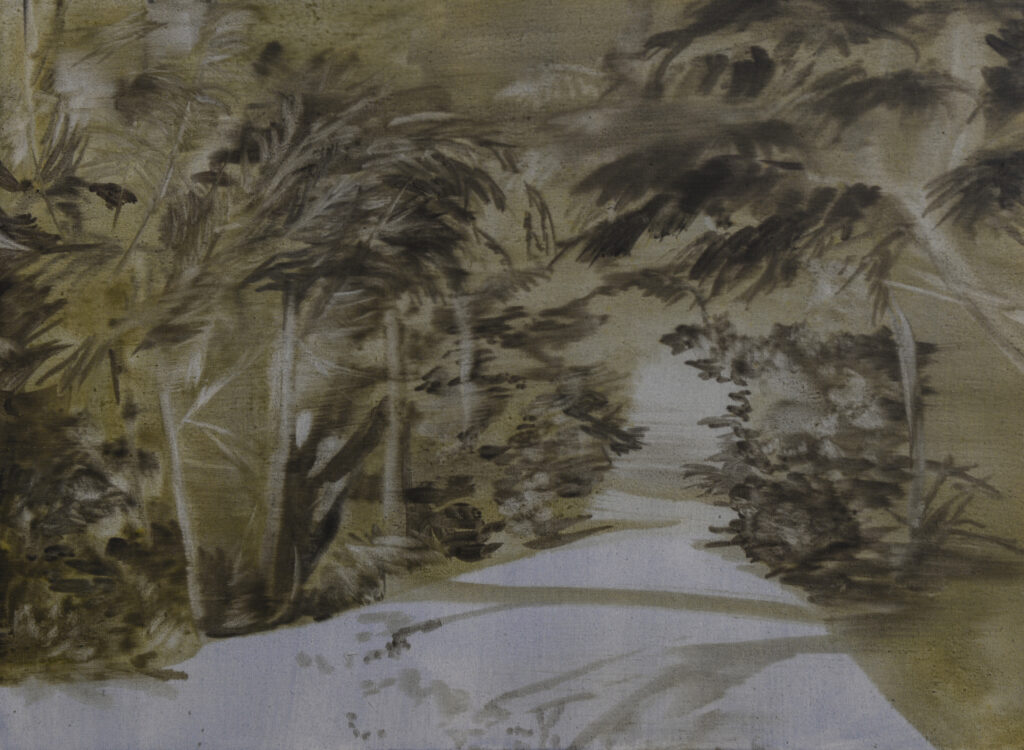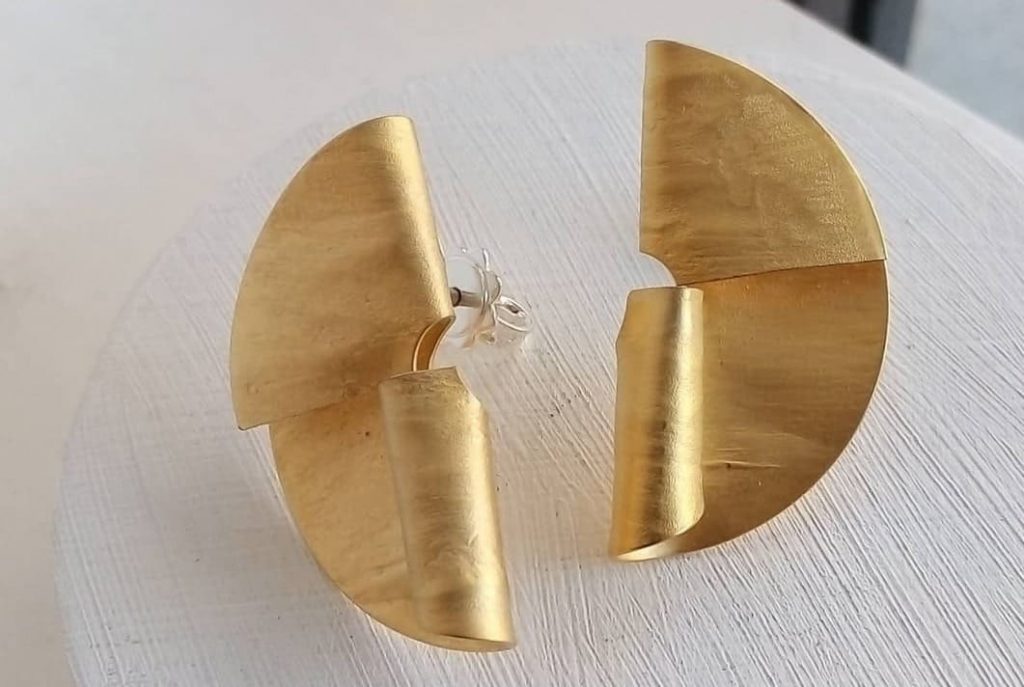I met Maria many years ago in our small provincial town and I have always known about her talent in drawing, but I never imagined that one day she would exhibit at the Biennale.
Maria is 26 years old, with long, wavy hair and two big hazel eyes. Like me, she lives in Limena (PD) and attended the Liceo Artistico Pietro Selvatico in Padua, specialising in Figurative Arts – Painting. In 2021 she obtained a Second Level Diploma in Painting at the Academy of Fine Arts in Venice, but she also uses the chalcographic engraving technique and, despite his young age, has participated in several exhibitions.
She is now in Milan where she works as an illustrator and this new environment has brought a change in both her lifestyle and her canvases. We met recently and she told me about her life in the ‘City’, her latest artwork, her arrival at the Venice Biennale 2022 and the story of her maternal family. Now all this will be told to you too.
How has attending the Academy influenced your personal style? Where does your pictorial research start from? What materials are you most familiar with now?
The Academy was a real school of life. You enter early in the morning and leave in the evening. It is like a job in its own right and, as such, it has its merits and flaws. For me, the Accademia di Venezia was a very inspiring, free environment, filled with stimuli and new ideas, full of different people with whom to compare and grow (and, in part, it reminded me of my beloved Liceo Artistico). Certainly in some ways attending courses in Venice was very hard, not only because of the commitment of being there every day (compulsory attendance and commuting life certainly did not help), but above all because here I experienced competition. I think the most constructive aspect of the academy was the comparison with others, being able to talk to older kids, to exchange opinions, especially with those who had taken an alternative course to mine. Particularly because in the various workshops one is not divided by age or year of enrolment in the courses; therefore, I found myself surrounded by people who were always new and different from me even in style. It was very nice to get a close look at the way everyone works, develops their ideas and turns the big blank canvas into a work of art. My stylistic research started in a very simple and ‘natural’ way: I began by drawing plants in my garden that gradually let human figures ‘enter’ the canvas. Initially these figures appeared like ghosts, but painting after painting they became more and more defined, precise and rich in detail, but always leaving out somatic features, because these elements never particularly interested me. I believe that the confrontation with colleagues and teachers was fundamental in acquiring the ability to realize and express in my own way what I wanted to represent.
The techniques I have become most familiar with in my studies are watercolor and oil: I use them in alternating periods. Watercolor is quick and immediate, while oil takes longer, both for drawing and drying; this allows me to meditate for a long time on the composition and content I want to represent. It requires more mental as well as manual effort, but at the end of the day I think this is the best technique.

How do you define your style now and how important do you think it is to go back to your roots to find your own way?
At the moment, I would define my style with the word ‘figurative’. As I said, in the beginning I painted plants, landscapes and elements of nature, then I realized that something of my own was missing. The rediscovery of my origins, particularly the maternal side of my family, was crucial in this respect.
While I was wondering how to modify my canvases, one day my mother came home with some boxes full of family photos, and from there a new artistic quest began. I inserted new human figures from these myriads of photographs into my canvases; initially they were simple silhouettes to which I gradually added new details. I have never painted people’s faces, not because I am unable to or because of a matter of privacy, but because I like to think that people who look at my work can find themselves in this missing part.
My mum was born in Syria to an Italian father and a Syrian mother: my grandfather was from Apulia and moved to Saudi Arabia in search of his fortune where he met a Syrian woman. Several years later the family moved to Padua when my mother and her brother were still young. Here she met my father and then I was born. The rediscovered photos represent distant worlds and places, the Middle East before how it looks now, my grandmother before being a grandmother, faces of people I have never seen, food and clothes that belonged to another era. Looking at them I rediscovered myself before I found a new way of painting. I would say that in my case, starting from my origins and giving them a pictorial restitution was fundamental (otherwise my research would not be there) and indeed, I believe it is a precious gift to possess so many fragments of memories of one’s own family!

Were there other artistic experiences besides the Academy that formed you?
Among the various artistic experiences I have participated in, the one that formed me the most was the experience at “MAC – Studi d’Artista”. It was an artist residency offered by the Youth Project of the City of Padua, I took part in the call and was selected for the 2022 edition. I worked on my canvases in a shared space with other young artists for the duration of nine months. Here, for the first time, I got involved with different artistic practices and with people with different backgrounds and studies from mine, there were those who had studied at the IUAV or at the Conservatory, not all of them came from the Academy like me. During those months I had the opportunity to have experiences, both artistic and otherwise, that I never expected to have: I took part in a collective performance (an artistic expression of which I had not yet experienced) and I managed to produce a small publication of my personal works. This shared space was located in an area of Padua near the station that has been part of a redevelopment project in the area for a few years now, and we young artists were called upon to participate. We did this mainly by involving the inhabitants of the area. I decided to do this through my personal project called ‘Ricettario’. I was sure that, like the photos, in every family there were old recipes to be recovered and so I did, asking door to door if they could and wanted to share them with me. Recipes handed down through the generations, written on a crumpled piece of paper and, revisited traditional recipes as well as more classic ones. I was interested in immersing myself in the intimacy of the local inhabitants in this way, especially after the pictorial experience of rediscovering my family through photos.

My personal project not only gave me a lot of satisfaction with the result, but it was a pretext to get to know the local people and get in touch with them. This experience gave rise to a ‘collective’ work in which I was busy involving entire families.
Pino’s birthday, oil on board, 22 x 17cm, 2022
In general, every call or competition I have participated in has always given me something because each time it has allowed me to get involved, confront myself and create something new.
You are a young artist and you have also had the opportunity to exhibit your work in different contexts, but what was it like to be selected for the Venice Pavilion at the 2022 Biennale?
I made a simple application in January 2022, as I frequently do in order to carve out a space for myself in the contemporary painting context. Before exhibiting at the Venice Pavilion, I had already participated in several exhibitions and competitions in many regions of Italy, for example: the 102nd Collettiva Giovani Artisti, an exhibition organised by the Istituzione Fondazione Bevilacqua La Masa, Venice; the final exhibition of the Combat Prize, (LI) and with an etching work at CArnello cArte ad Arte – XXXVI Premio Fibrenus, an exhibition held in Isola del Liri (FR). In March, they contacted me to tell me that I had been chosen as the winner of the First Prize, which was a great emotion! It was the first time in my life that I came first in a competition (finally) and the personal satisfaction was so great since it was an institution like the Biennale. The news of the victory was magnificent, as was the opening ceremony: I had a completely new experience; it had never happened to me to have so many spotlights on me, with the presence of the press, video cameras, important curators, the mayor of Venice, the Minister of Culture, and even the ever-present Vittorio Sgarbi.
Another very significant moment I experienced was when I held my first solo exhibition at the Oratorio della Beata Vergine del Rosario in the municipality of Limena (PD) from 2 to 11 September 2022. It is a small deconsecrated church that is really very evocative, I was granted the entire exhibition space, and I was able to set up the exhibition in total autonomy, something I had not yet had the opportunity to do. I received a lot of support from the local community, there was a huge turnout of visitors, and I was also supported by the City Council, which immediately believed in me. I would say that these two experiences were really significant and brought me to where I am today. I cannot imagine doing anything else but painting for the rest of my life.
How important is it to believe in your dreams? What advice would you give today’s young artists?
Believing in one’s dreams and persevering in them is fundamental, but unfortunately it is not enough, you also need a good dose of luck and knowledge to continue working and living in the art world: nowadays you really have to struggle to get noticed and appreciated because it is a very elitist, competitive and complex world. I’ve always loved painting and I wouldn’t have known how to take a different path, I had great support and trust from my parents and friends who didn’t make me doubt my choices.
In any case, I would give others the same advice I have always given myself: ALWAYS do what you like and BELIEVE.
I would like to thank Maria Pilotto for granting me this short interview and for letting me into her world, telling me about the challenges young artists have to learn to cope with in order to succeed in today’s art world. Art is not only made up of big names and famous, controversial personalities, but I think we have to get used to the idea that this is a profession that requires commitment, study and the continuous ability to put oneself out there by rediscovering oneself, as Maria showed me.


